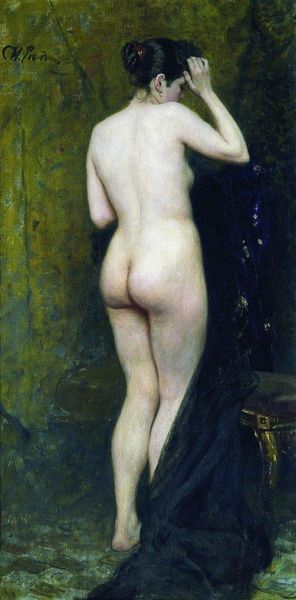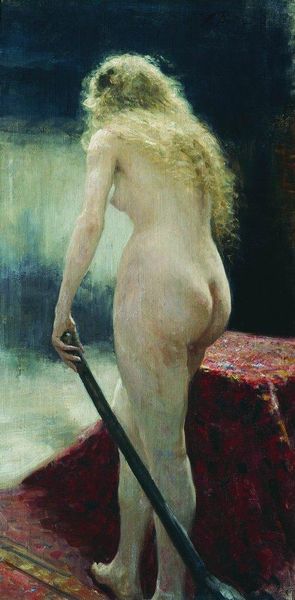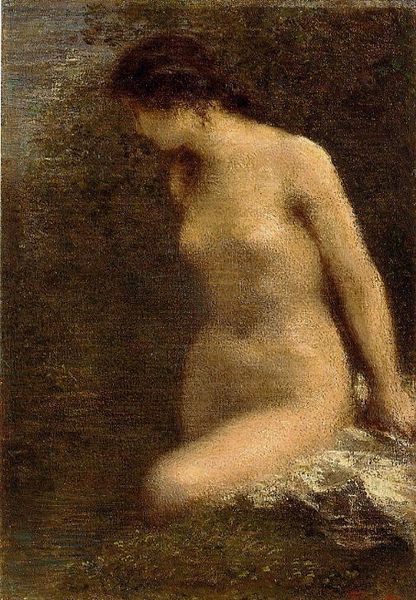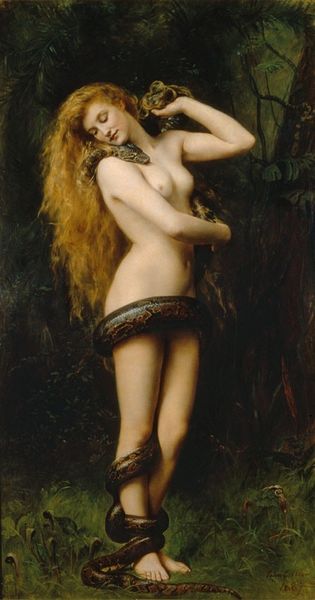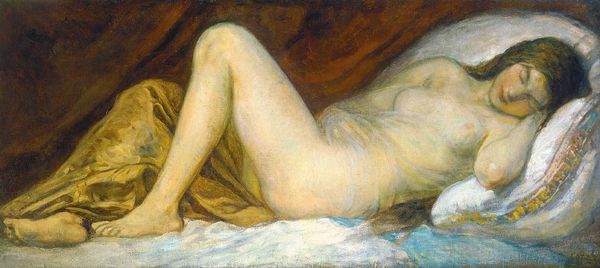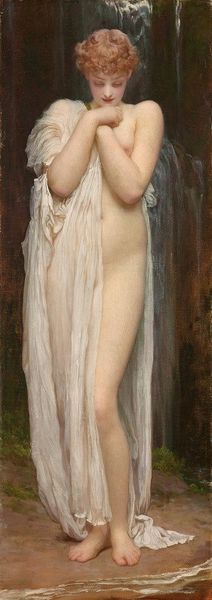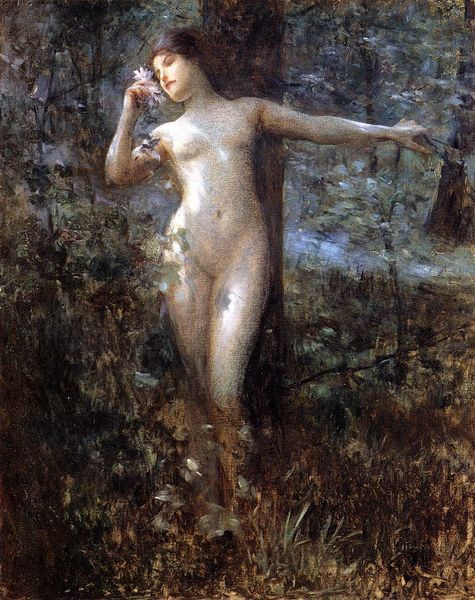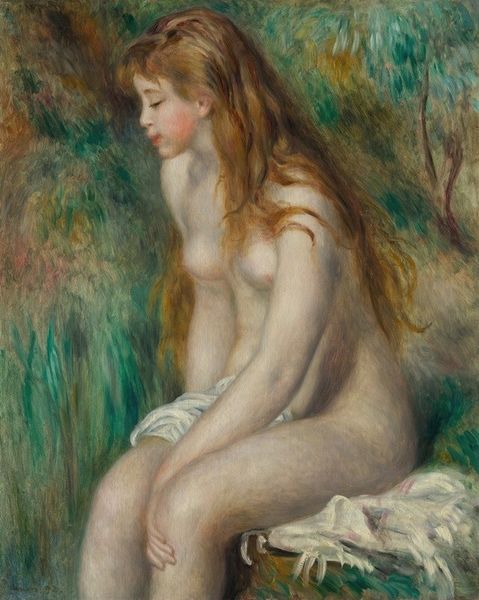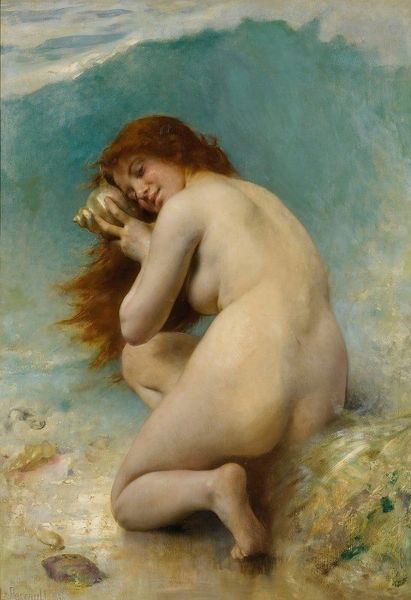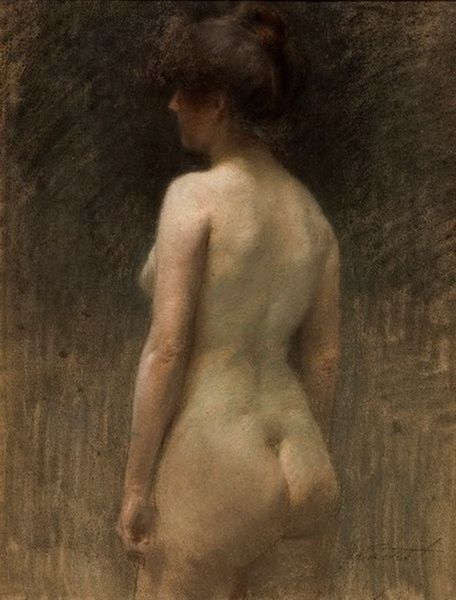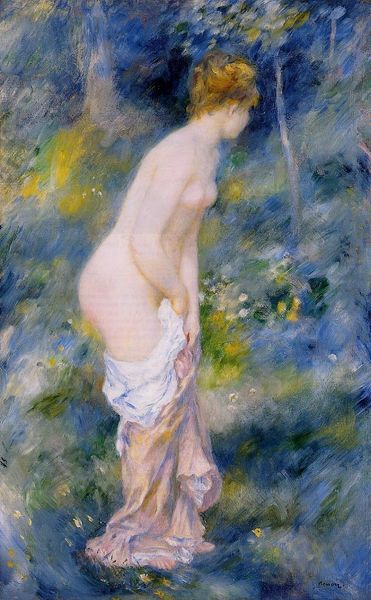
Copyright: Public domain
Curator: Here we have Konstantin Makovsky's painting, "Nude Woman in Black Stockins", created around 1900 using oil paint. Editor: My first impression? An air of contained rebellion. The vulnerability of the nude figure starkly contrasts with the assertive darkness of the stockings. There's a push and pull. Curator: Absolutely. This was a period of immense societal shifts, and the evolving representation of women in art mirrored those changes. This piece sits interestingly within late Romanticism, showcasing an intriguing blend of realism and an idealized form. How might this have resonated within its specific historical and socio-political contexts? Editor: The woman's gaze is cast downward, a seeming retreat, yet the stockings signal something bolder. Was she conforming to societal expectations even as she subtly challenged them? Or was this perhaps intended for a specific, perhaps private, male gaze? Curator: These were times of emerging bourgeois culture and the rise of the salon. This image raises interesting questions of patronage. Who commissioned such a work and what were their intentions? There is an undeniable sensual undercurrent that aligns it with its period's art, although it distinguishes itself through those provocative stockings. Editor: The fact she is in the act of dressing - in the specific attire she's choosing - hints at agency. It challenges notions of passive objectification in a really compelling manner. You might also read it from a feminist theory perspective, seeing the stockings as tools to empower the wearer, rather than being symbolic of male power. Curator: Indeed, she takes charge in constructing her identity and sexuality. What power did imagery possess during this transition into modernity and how were gender roles shaped or contested by artistic expressions such as Makovsky's "Nude Woman in Black Stockings"? The pose is far from demure. Editor: It leaves you wondering about her story, her choices, what spaces she occupies outside of this painterly moment. The ambiguity is definitely thought-provoking and provides rich opportunities for different interpretations through various identity perspectives. Curator: This piece reveals, beneath the traditional subject, societal tensions and unspoken challenges. It really captures the complicated relationship between art and culture during a pivotal historical period. Editor: I find I see her very differently having delved into her social and historical setting – it is this approach which encourages richer dialogues when engaging with art history.
Comments
No comments
Be the first to comment and join the conversation on the ultimate creative platform.
